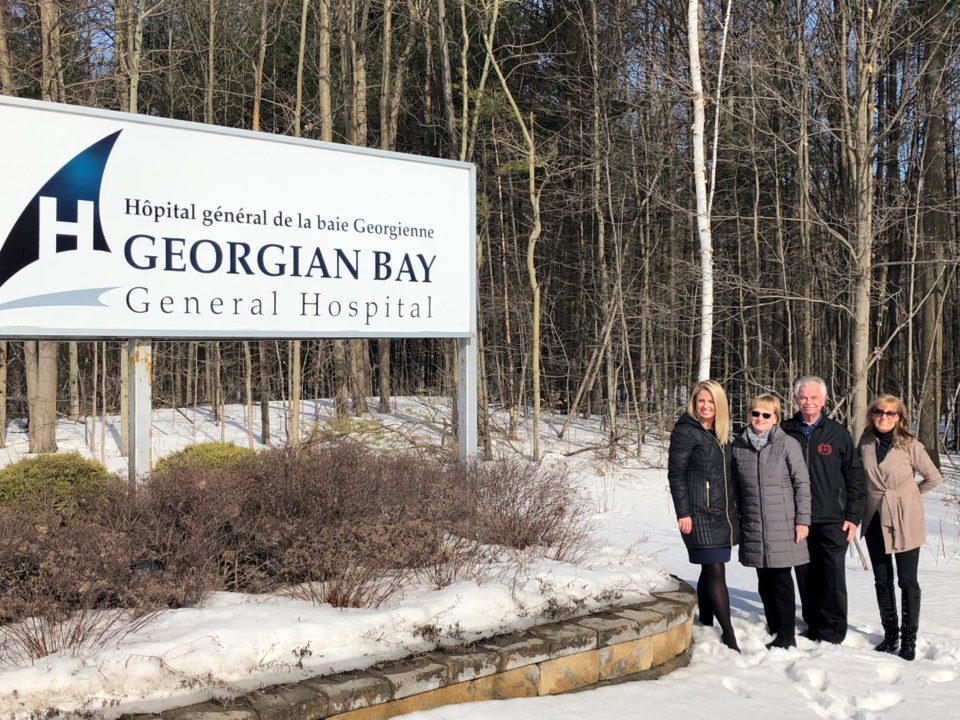A new land purchase has put Georgian Bay General Hospital (GBGH) on solid ground to help meet future healthcare needs in the area.
The hospital foundation purchased 22 acres of vacant land on Highway 93, next to the hospital’s current location in Midland. The foundation bought the land in December last year, after finding out about the opportunity earlier in fall.
“This was an unexpected opportunity and we're just at the preliminary stages of our planning,” said Gail Hunt, President and CEO of GBGH. “The population growth in the area will have a substantial effect on future stability for new infrastructure. When the master planning process is finished, and if it recommends a new build then we have the option of building a new location without interrupting our services here.”
The land was bought for $687,000. Close to $297,000 of that amount was covered by the endowment fund set up for the foundation by the Gil Robillard family, said Nicole Kraftscik, executive director, GBGH Foundation. The rest of the money came from the foundation’s general funds.
“We are extremely grateful to the Robillard family whose kindness is enabling the Foundation to invest in the future of healthcare for our community,” said Kraftscik.
“My dad was a visionary with great foresight,” says Susan Robillard, daughter of Gil Robillard. “He liked planning for the future, and the purchase of land to ensure future stability does just that. We are glad the Foundation could use the Gil Robillard Fund to help ensure the future of healthcare for our community.”
The hospital and foundation boards saw this purchase opportunity as a gift because of it being centrally located for people in the hospital’s catchment area, Hunt said.
“And it's right next door to our current location,” she said. “There's really no reason you wouldn't want to keep the hospital on this site.”
At this time, however, there are no plans for construction on the property, said Kraftscik. But given the age and size of the existing building, there will eventually be a need to re-develop and expand onto a single hospital site.
Whether a new build is needed or not will be determined through the master planning process, said Hunt.
“Forty years ago, it was probably best laid out for the population at that time,” she said of the current 20-acre property on which the hospital sits. “It was such that there was sufficient capacity for a 20-year time frame. It's hard at that time to envision how your population is going to grow.”
It was built to accommodate 17,000 emergency visits, Hunt said. Currently, the hospital logs just under 47,000 visits a year.
Hence, she said, planning exercises now focus on projecting the population growth and its needs for the next 40 years, so the hospital has capacity to expand.
“The master plan projects a population growth and the demographic and health needs of the population,” Hunt said, “It helps in determining what services will be in high demand, how many more beds we will need and what surgical services, and what kind of diagnostic testing would be needed.”
The process may even conclude that the area has a high enough volume to warrant speciality practices at the hospital, she said, rather than having patients drive to other hospitals in the area.
“When you take these two properties together,” she said, “it presents a lot of expansion possibilities.”
The hospital’s catchment area has an elderly population, Hunt said.
“So we see a lot of chronic illness here, at a higher percentage than the provincial average,” she said. “It means we've acquired a higher demand for certain services, diabetes, heart disease, COPD, and more.”
Whenever a hospital goes through a health capital planning process, Hunt said, the split in funding for a build is usually 90% covered by the province and 10% by the community.
“So the foundation would have to look into fundraising,” she said.
Kraftscik said the foundation does have plans to chat with supporters about this in the future. But for now, she said, it’s good news all round.
“Even just being in the hospital, the staff who work in here and see all the pressures, are also happy about the announcement and the future of the hospital,” said Kraftscik. “They see what the transformation could do for the hospital's future and they're supportive of it and I think that's good.”
